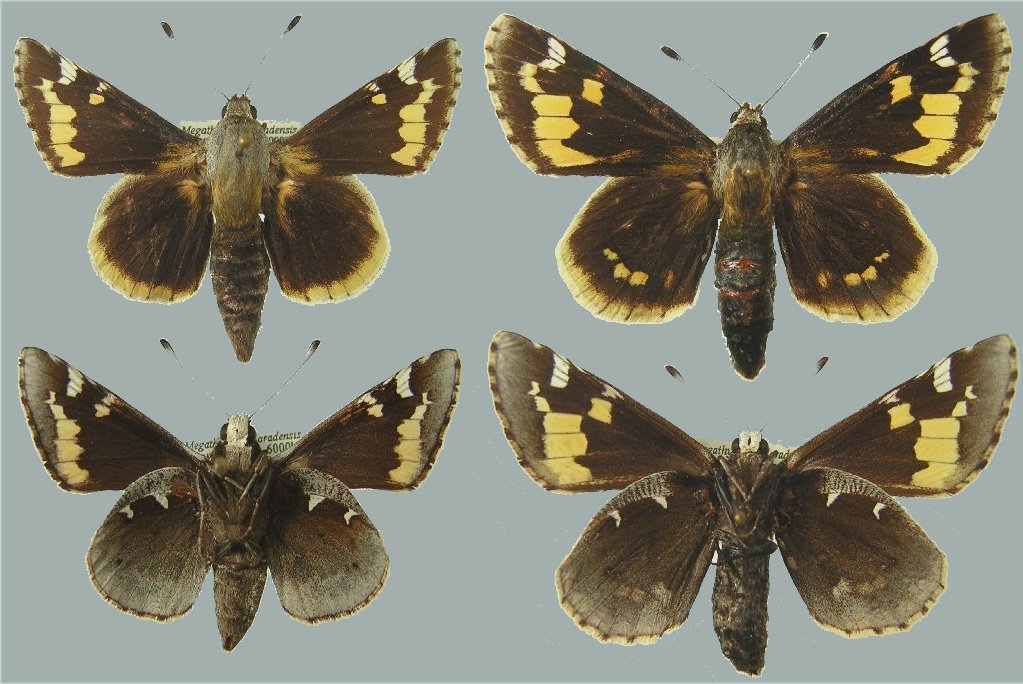Megathymus yuccae coloradensis

Photo Life History: Megathymus yuccae coloradensis; Wild Utah
Habitat: Desert Hills & Mountains; Desert Lowlands
Host Plants: Yucca angustissima; Yucca utahensis; Yucca baccata; Yucca harrimaniae
Suitable Lab Host Plants:
How to Find Female Butterflies:
How to Care for Live Female Butterflies:
Methods of Female Oviposition:
How to Find Eggs:
How to Hatch Eggs:
How to Find Caterpillars in the Field: Look for Skipper Tents (last instars).
How to Find Pupae in the Field: Look for Skipper Tents. Check out Dr. Andy Warren's awesome video tutorial.
Caterpillar setups:
Larva to Pupa:
Number of Broods per Year: 1
Overwintering Stage: Mature Fifth Instar Larva
Overwintering Strategies:
Post-Hibernation Strategies: Expose mature last instar larvae to warmer temperatures and long-day photoperiod.
Avoiding Diapause Techniques:
Disease Prevention:
Emergence: Emergence Container
Field Notes: Successfully rearing giant skippers is a skill in and of itself. Because they overwinter as a mature fifth instar larva, the smartest strategy is to find post-diapause mature fifth instars (or pupae) in late winter or early spring before the skipper's main flight. Collecting eggs or finding early instar caterpillars really makes little sense for this species unless you wish to photo-document its life history--which would be a noble cause. Last instar larvae live in silken burrowed tunnels created in the roots of the Yucca; ultimately killing the plant, or that section of the plant supported by the compromised root. The top of this burrow is visible towards the center of the plant and is sealed with caterpillar frass and is usually termed a 'tent' by Megathymus enthusiasts.
Many times, it is necessary to dig up the root of the doomed part of the plant to obtain the caterpillar or pupa; since it can easily rotate (wiggle) its way either near the visible tent or as far as a foot or so down towards the bottom of the root. In spite of the fact that this skipper kills portions of or entire Yucca plants, these same plants have shown the resiliency to survive such tactics by sending up new shoots on a somewhat regular basis.
Again, if you haven't seen this, you need watch Dr. Andy Warren's awesome video tutorial.

